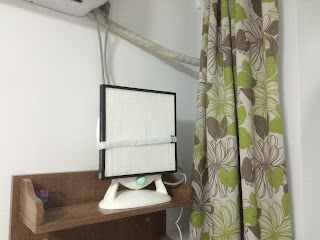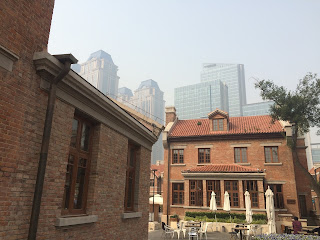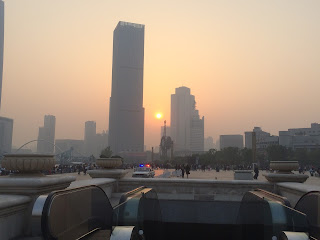Have you heard of Taobao? You haven’t? This must be changed. What is Taobao, you ask? Taobao is the greatest temple to 21st century consumerism you will ever find. Think Amazon, if everything cost 1/5th as much. What can you buy? Everything… as long as it isn’t western political literature. Otherwise, if it doesn’t exist on Taobao, it’s probably not worth buying. If it does exist on Taobao, it probably isn’t worth buying either, but I digress. Clothes, sports equipment, books, furniture, food, cars, travel packages (I refuse to correct what google translate presumably incorrectly told me was a trip to America, “so easy” for only “3999 direct American freedoms”), real estate, paternity tests, semen (*record scratch* and you thought I was kidding). During the most recent largest online shopping day in the world (Chinese Singles’ Day! 11/11. Of *course* someone would try to take advantage of impulse buyers on the day their potential loneliness is thrust in their faces), Taobao raked in $9.3 billion. The fact of the matter is that they should have a different word for shopping addiction, one much more evil sounding, to capture what could happen to you once you discover Taobao.
I too, wanted in. As the ultimate example of the incredible evolution in Chinese domestic consumption demand, I thought it crucial to join to better understand modern Chinese culture (well…. okay, I wanted a rug and an air filter. And a keyboard. Maybe some socks. Also some…). Of course as a usual Chinese system, it’s pretty easy to access and navigate if you neatly fit the person for whom this system was designed. Unfortunately, for the first time since coming here, I was very clearly not that person. Read on, dear foreigner, and learn from my struggles.
1) Get hooked
I was first motivated to look on Taobao for socks. This may sound unexpectedly banal, but a very unexpected difficulty I’ve had to deal with is that I apparently have giant monster troll feet, at least from the perspective of the average Chinese shoe store. The local hypermarché maxes out at several sizes below mine and the attending staff just laughs when I ask if anything bigger is available. So I turned to the internet. After a brief search, I found some socks I liked (though for some reason part of the advertisment on the page was pictures of the socks being burnt over a teacup and the (English) words “FASHION SOCIALIST PUBLIC IS POPULAR”. I guess there’s some deeper hidden meaning I’m missing out on here), 5 pairs for roughly $1 no less, and clicked the buy now button. I get asked for a login.
 |
| F*** the system, I think? |
2) First Attempts
You see, Taobao is connected through a common parent company with Alipay, itself another Chinese modern consumerist legend. The Chinese name for Alipay (支付宝 - Zhīfùbǎo) is for some reason rendered as PayPal by the Google Translate Chrome plugin, but once again, it is more than just a mere “Chinese [insert Western tech company here]”. It has all the patently Chinese innovations such as the possibilitiy of logging in, paying, or sending money to friends by the scanning of a QR code with your phone and an incredibly annoying sign-up process for foreigners. Therefore, to buy anything off Taobao, you must have a functioning Alipay account. So much so good, and I proceed over to the Alipay website to conduct the formalities.
3) First Succeses
I signed up for an alipay account. It was pretty easy, honestly. On alipay.com, clicking 登录 (log in) and then 免费注册 (free register) on the subsequent popup will direct you to a straightforward registering process familiar to anyone who’s been on the internet. Google translate will even be enough to get you through this. Say you’re from China when it asks. If Taobao looks at you funny, just say *shhh* and move on (if you’re reading this from the U.S. or Europe, no, Taobao hasn’t come to your country yet). Get your sms verification code sent, and after some more registering that took an hour (because lolz, I can’t speak Chinese that well), you’re back at the home page of Alipay. You tentatively put in your username and 密码, spend 5 minutes trying to read the nearly illegible captcha, and are logged in! Success! The glory of consumption was only some clicks away!
4) Or so it may seem
So now you’ve set up your alipay account. Next you think, rationally, that it’s time to make your alipay account able to pay for things. There are two ways to do this; load money onto Alipay itself or link Alipay with a debit card. I of course chose the latter, I didn’t want to waste time during purchases to remind myself of how much money I’m spending by such frivolous distractions as recharging an online account. Welp, time to do some more registering. After navigating the same procedures again (phone number, verification codes, fun stuff), I hit a first snag. I’m asked for my citizens’ ID number, likely a consequence of my insistence on being from China. I try my passport number, which my bank has as my ID verification. Nope. 18 characters needed, no more, no less. There are suggestions on just filling the number with 0s until 18 characters are reached, but that seems no less sketchy. I try again, thinking I might’ve missed a button for foreigners. No such luck. After another hour of pressing around and looking for solutions, I give up. Clearly, this link between Alipay and my bank card was not meant to be.
5) False hopes
Thankfully, there’s another option! I quickly mover over to the function to load money onto my account. For some reason, this goes much more smoothly. In no time (well, as with everything relying on my Chinese skills, ‘no time’ seems to mean an hour), I had my first 500 kuai loaded, ready to be thrown at the world’s greatest online marketplace. I go to Taobao, pick a random thing that costs next to nothing, and attempt my purchase. Once again, I’m faced with a login screen, now one that I approach confidently. I fill it out, and am hit with another variety of the amazing world of Chinese captchas - the ‘identify the quoted character by clicking on it in this picture’. This, thankfully I can do, unlike the much more terrible “identify the picture that corresponds with the impossibly blurry character” I had to go through trying to get my qunar.com train booking account set up, or the “deconstruct the blurry chinese character into its components” which google images claims exists as well. I click on whatever wavy, struck through character they ask me to, slide a little slider all the way to the right, and finally convince the computer that I am, in fact, human (muahaha?). Here, finally I meet my true enemy - the real-name verification system. It pops up on a screen, taking me to Alipay’s verification site.
6) Meeting my Archnemesis
Another registration? Urg. Okay. I’ve heard rumors of this. Something with passport pictures. I can do this. Thankfully here’s a 外国 button, *finally*. Once again, I put in my phone number, and get a text verification code (man, they’re obsessed with these). I pass onto another page, where I need to input all my personal information, including scans of my passport information page and my Chinese residency permit. I had both, so I put them in. I gave my Chinese address associated with my bank account, and move forward. The next page asks for my bank account. This, once again, I can do. I click the “your bank” drop-down menu, scroll down to look for ABC (Agricultural Bank of China, our illustrious bank in which all our stipends are deposited), aaaaaand………. nothing. I look again. I turn off google translate to see if maybe it translated wrong. Nope. In between the ICBCs, China Merchant Banks, China Industrial Banks, etc etc, my Agricultural Bank of China was nowhere to be found.
7) Defeat
I frantically restarted the process, and was stuck at the same place. I started looking for alternate buy buttons on Taobao, anything that would let me use the money already in my account. Nothing. Even adding the item to my online shopping cart prompted the verification procedure. Jesus. After a long time of trying, I decided I was done. Clearly, Taobao was not meant for mere mortal foreigners such as myself. From behind a thin veil of water in my eyes, I can make peace, and go back to bargaining for too small socks at the corner store.
8) A New Hope
At this point, a friend with both the qualities of being effectively fluent in Chinese *and* not having a Chinese ID card number (therefore having faced the 老外 struggle before) jumped in to help. We went through the steps above several times, and he confirmed that I haven’t missed anything. He turned to Alipay’s customer service, who mentioned a curious point - apparently, the Agricultural Bank of China (and ABC alone) could not verify bank accounts if the names were written in non-Chinese writing systems. For some reason, this was a problem only with ABC, and represents another incident in the long line of things that make it difficult to trust my bank (a fellow Yenchinger was required to produce his (US) social security number while opening his bank account and was sent away when he refused to give it out, for example). It was impossible for me to complete the process with my current bank.
9) The Slog Continues
So, I go to ICBC (Industrial and Commercial Bank of China - the largest bank in the world, apparently. Yay government-required support for SOEs I guess?) the next morning. What they lacked in having an ATM 2 minutes away from my dorm, they made up for in being seemingly more legitimate, having english-speaking ATMs, being able to actually process non-Chinese names, and having a generally more appealing red-ish tone in their logo than the agricultural green in ABC’s. As usual, this process took another few hours, partially because in general in Beijing the average wait to see a teller at a bank as a private customer is never under an hour, and opening a bank account requires the signing of over 12 similar-looking documents probably giving away my first-born (you know, usual banking practice). To avoid a mistake I made with ABC (something I didn’t bother elaborating on to not make this terrible Odyssey any longer in print), I specifically asked for online banking, and after several other signed documents, I received my little electronic sign-in dongle, a USB device used to authenticate (?) online banking (??) logins.
10) The end is in sight
My heartbeat quickened. I rushed back to my dorm room and went to Taobao, triggering its authentication desires. I quickly passed through the registration pages, uploaded my passport, put in my name (which I had to try a few times, because of course “Kevin Schwarzwald” by itself doesn’t work, but “SCHWARZWALDKEVIN” does - always make sure it’s the same as what’s written on your bank account) and my bank account number, SUCCESS. Within a few days, so Alipay tells me, a small amount of money will be deposited in my account, and I just need to tell them what it is. The next day, 0.14 kuai landed in my bank account. I told Alipay. They told me to wait another 1-2 days for final verification.
 |
| I was excited. |
11) Glorious, glorious victory
Finally, I received the beautiful message from Alipay that my authentication had gone through. After a crazy emotional rollercoaster that wouldn’t throw me off for over 8 hours spread over at least a week, I was now integrated into the world of Chinese online shopping. My first purchase was an air filter (by these guys —> they’re cool, apparently they’ve made one that’s just as effective as the ‘professional’ 5000kuai+ ones for just 200) that’s now derpily gracing my desk. Socks and a diplomacy board are on their way. If there is any moral to my story it's that just as you become complacent as a foreigner, China will find a way to surprise you. Also that the bureaucracy is great as long as you are exactly the target audience that it wishes to speed through, and if you are not part of that group, even the simplest of things, like signing up for online shopping, might turn into a multi-hour/day/week affair. (Also that consumerism is bad or something? Probably?).
 |
| Derpy air filter, meet desk |
PS:
As far as I can tell, everyone who has attempted this process has a different story. One friend apparently even managed to get it done with ABC, and many spent far less than 8 hours trying to set this up. Regulations and procedures seem to change on a relatively frequent basis as well, meaning that the process is basically a crap shoot anytime you try it.



















